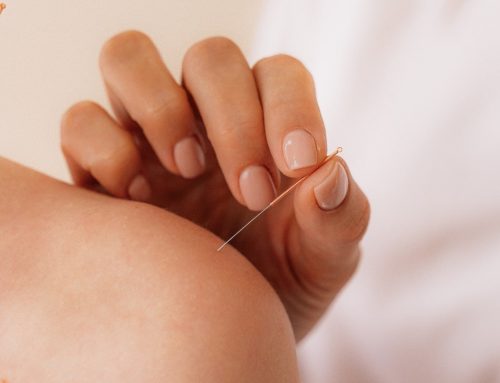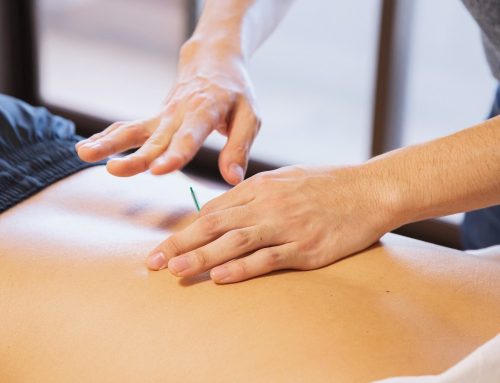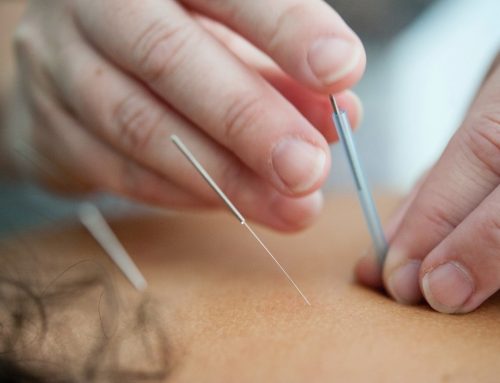Plantar fasciitis is a painful condition that affects more than 3 million Americans each year. Because it has such a high prevalence, it’s no secret that many are seeking solutions for treatment and pain relief. Fortunately, dry needling is an effective treatment that often helps plantar fasciitis suffers get relief from pain and return to the activities they love. Today, we’ll discuss dry needling for plantar fasciitis and explore what’s so wonderful about this cutting-edge treatment.
What is Plantar Fasciitis?
Before we can discuss dry needling for plantar fasciitis, we need to understand what exactly plantar fasciitis is. The plantar fascia is a thick band of tissue that runs across the bottom of your foot, connecting your heel bone to your toes. Plantar fasciitis results when this band of tissue becomes inflamed. Sufferers of plantar fasciitis experience pain that can range from mild twinges, to stabbing excruciating pain on the underside of the heel. Typically, sufferers complain that pain is at its worst when they take their first few steps during the morning, but pain can also flare-up and worsen after prolonged periods of standing or walking.
Common Causes of Plantar Fasciitis
Plantar fasciitis can be caused by a variety of conditions. Some of the most common causes are:
• Obesity
• Abnormal pronation – from activities such as ballet or running
• Frequent wear of shoes with poor support
• Prolonged standing – especially in occupations such as teachers, hairdressers, etc.
• Age – occurrence of plantar fasciitis is most common between ages 40 to 60
• Foot physiology / mechanics – being flatfooted, having a high arch, or abnormal walking pattern
What is Dry Needling?
Now that we understand plantar fasciitis, let’s examine dry needling. Dry needling works by using small filament needles to target the painful knots that often occur in muscles (called myofascial trigger points). These knots are made up of a group of muscle fibers that have shortened after having been activated, but were unable to lengthen back to a relaxed state. As a result, painful, sensitive nodules in the muscle form, and muscle fibers become tight enough to compress the surrounding capillaries and nerves. Unable to obtain a fresh blood supply, these muscles are then unable to receive the oxygen and nutrients they need and become unable to flush out toxins. As a result, patients experience pain and discomfort, muscles that are sore to the touch, and even an impediment to their normal range of motion.
Dry Needling for Plantar Fasciitis: Why Is it Effective?
Researchers have discovered that dry needling is a promising treatment for completely resolving plantar fasciitis. Plantar fasciitis is often triggered by tightness in the foot and calf muscles. When these muscles become tight, they pull at the muscles and fascia on the heel bone, causing inflammation. This means that because dry needling primarily works to relieve muscle tightness, it is particularly effective for plantar fasciitis. Once trigger points along the plantar fascia are provoked to “twitch” with the insertion of a dry needle, the inflamed muscle relaxes, and inflammation and pain are reduced or eliminated altogether.
Dry Needling for Plantar Fasciitis: What Should I Expect?
For many people, having a needle inserted into their foot is not something they ideally look forward to. Thankfully, when you receive dry needling for plantar fasciitis, your physician can numb your foot with a local anesthetic to prevent any pain or discomfort during the procedure (the bottom of the foot can be especially sensitive because of the high density of nerve endings in that area). It’s also important to keep in mind that any temporary discomfort you might feel during the procedure is far outweighed by the long-term relief you’ll likely experience afterward.
With dry needling for plantar fasciitis, your physician may also address the calf area in addition to the bottom of the foot, as this muscle group often plays a role in plantar fasciitis relief. Most patients feel a slight stinging sensation as the needle is inserted and removed, but this usually lasts no longer than a second. It is also common for patients to experience a muscle spasm or “twitch” at the point of insertion (calf muscles are particularly prone to producing rather strong twitches). These twitches are a good sign, often indicating that a targeted muscle is being “reset.” Needles are left in the skin anywhere from mere seconds, to 15 or 30 minutes (your doctor will assess how long your needles should be left in).
Generally, patients experience marked pain relief immediately after just one treatment. As an additional part of your treatment plan, some physicians may also administer a steroid at the sight of insertion to help increase pain relief.
Dry Needle Pain Relief of Jacksonville, FL
Generally, dry needling for plantar fasciitis is has been found to allow many patients to experience a marked improvement in flexibility, range of motion, and pain relief immediately after just one treatment. It’s important to keep in mind, however, that most physicians recommend more than one course of dry needling, and usually utilize the treatment as a part of a larger physical therapy treatment plan. If you are suffering from plantar fasciitis and are interested in treatment, Dry Needle Pain Relief can help. Our physicians provide quality dry needling services to patients across North Florida and can help you get back to pain-free living. If you are interested in dry needling for plantar fasciitis, contact us today to make an appointment!








Leave A Comment